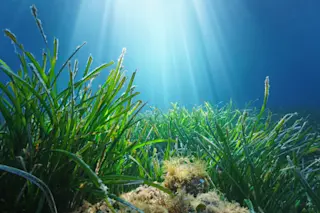Gas hydrates, icelike deposits of methane locked away in permafrost and buried at the ocean bottom, may pose a threat to our climate (see Discover, March 2004). Then again, they may also prove a valuable fuel resource. In 2002 an international team of scientists began drilling into the frozen Mallik Gas Hydrate Field in Canada’s Northwest Territories to explore this second possibility. By heating and jostling the permafrost, the researchers have now managed to extract significant amounts of methane—the primary component of natural gas—from the field. “Everyone believed it was possible, but this is the first time it has ever been done in a controlled environment,” says Tim Collett, a chief scientist of the Mallik Project.
Within a couple of years, Collett and his colleagues plan to try developing hydrates as a usable resource. This spring, the Japanese National Oil Company, one of the partners in the Mallik Project, will ...














